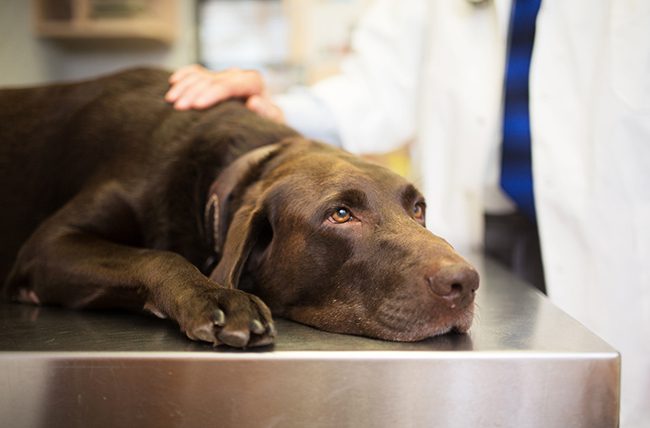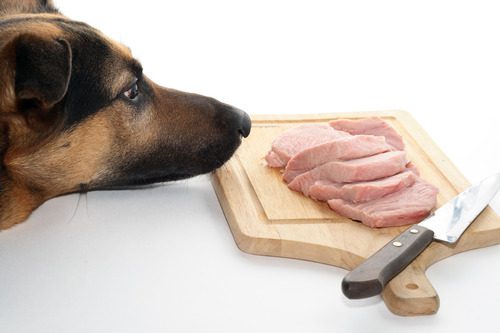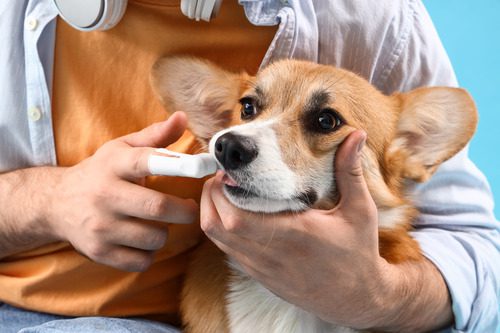Clifton Park Pet Owners: What are the Signs of Kidney Failure in Dogs?
In its earliest stages, kidney disease in dogs is virtually undetectable. Only very subtle outward signs appear- signs which can easily be shrugged off, or attributed to “something else.”

Meanwhile insidious internal processes are slowly chipping away at a major organ that provides essential support to bodily function. Only when the disease becomes advanced do we see changes dramatic enough to make us take notice.
By the time that happens, it may be too late for recovery; then the only option is to offer comfort care until an endpoint is reached. It can be a sad and scary process.
Below, we’ll go over what Clifton Park pet owners should look out for in terms of kidney failure in dogs.
Signs of Kidney Failure in Older Dogs
The average dog can be categorized as senior or mature at around eight years of age. This of course varies a little by size. Giant breed dogs might be considered senior as early as five, while small and miniature breeds might not show major signs of aging until they are ten. As dogs age on the outside, they also age on the inside.
While the liver can regenerate to a point, other organs like the brain, heart, and kidneys, are all affected by the passage of time. Years of free radical damage, time spent hard at work doing what organs do, and maybe even unknown toxic exposure, can slowly cause damage to the tissues of these organs, and compromise their ability to fully function.
The kidneys in particular spend most of their time filtering waste materials from the blood. When waste material is filtered, the kidneys transform it into urine, sending it down the ureters and into the bladder.
Imagine this: The kidney is to your body, what the cabin air filter is to your car. It comes out of the package bright and shiny- ready to filter anything you can throw at it. Even in a car that isn’t driven often- one that is well cared for, that avoids dirt roads, and lives in a sheltered garage- that filter catches every microscopic particle of dust, dirt, and insect that it comes into contact with. Over time the filter becomes clogged, and while it still tries to filter, it stops letting air flow through it all together. This is exactly what happens as kidneys age. They slowly break down, and lose their ability to filter out those waste products that circulate in the blood. What happens then?
This is Called Chronic Kidney Disease (CKD), or Chronic Renal Failure (CRF)
Those waste products are what cause the changes that we see associated with kidney disease. Many dog owners would simply dismiss the symptoms as normal signs of advancing years. Increased tendency to sleep, a picky appetite, less energy and enthusiasm, loss of muscle mass, weakness, weight loss. This is why many veterinarians recommend checking lab work every year or six months as dogs get older- what you see in your dog might not just be “old age”.
Signs of advancing kidney disease include dilute urine (normally it has a yellow tint to it, but it starts to look more and more like water), increased thirst (emptying the water bowl gulps at a time, multiple times a day), increased urinations. Even vomiting and diarrhea can be seen, as toxic waste builds up the blood stream it causes other imbalances in body function, and often makes dogs nauseous.
When your vet does a physical exam, they will likely mention that one or both kidneys feel enlarged- this is called hypertrophy- meaning part of the kidney’s function declined, so other parts of the kidney tried to work overtime to “pick up the slack”. They might also note belly or back pain that aren’t associated with an injury of any kind.
When a dog is diagnosed with chronic kidney disease, often a regimen of fluid therapy, vitamin B injections, blood pressure medications, and diet change are prescribed. Unfortunately the disease itself is ultimately fatal. These treatment measures are not put in place to cure the disease, but rather to keep the patient comfortable until the disease is too advanced to manage anymore.
Signs of Kidney Failure in Younger Dogs
Younger dogs aren’t often plagued with kidney issues. Their kidneys haven’t had enough time to show the advanced signs of aging. But we still need to address kidney disease in young dogs- why? For two major reasons. First, we have congenital kidney disease. Second, we have toxicity.
Congenital Kidney disease
The term congenital simply means a disease that is evident at birth. This could mean it is inherited from one or both parents, this could mean some sort of damage was done before birth, or it could be an anomaly with no clearly defined cause.
Congenital kidney disease may not be immediately obvious. Owners might just recognize a “runty” puppy, who doesn’t grow as fast, maybe doesn’t eat as well, and seems less puppy-like than his or her littermates. When lab work is done to determine a root cause, kidney values will be abnormal.
Unfortunately there is no cure for this disease, so as with chronic renal failure in senior dogs, the treatment protocol for puppies with congenital kidney disease is the same- do what you can to keep the patient comfortable until the disease is too advanced to manage anymore.
Kidney Disease from Toxicity
This is probably the one type of kidney disease where a cure is possible, in some cases. Acute (sudden) kidney disease occurs secondary to exposure to something that causes damage to the kidneys. Damage can be done by everything from medications or medication overdoses, plants, antifreeze, and even some foods. Even Lyme disease can attack the kidneys and cause acute kidney disease.
When the toxic substances is consumed, substances build up in the blood stream that are then filtered by the kidneys. During the filtration process, so much damage is done that the kidney suddenly loses its ability to filter and function. This causes a rapid back-up of toxic substances in the blood, and makes dogs very sick, very fast.
The signs are similar to those of chronic kidney disease, but happen at a more accelerated rate, and in younger dogs of course, owners find these signs concerning at the start. It’s highly abnormal for a dog under the age of 8 to suddenly appear lethargic, weak, anorexic, and skinny.
Treatment for Toxicities
Treatment of some toxicities involves decontamination, detoxification, and diuresis. Decontamination involves removal of the toxic substance- most often achieved by inducing vomiting and sometimes even giving enemas- make the toxic substance exit out both ends as quickly as possible.
Detoxification involves providing some sort of protection or antidote. Activated charcoal, when consumed, reduces the body’s ability to absorb anything through the stomach and intestines. There are some toxic substances that have effective antidotes too. Diuresis involves giving therapeutic doses of fluids, either intravenously or under the skin, to hydrate, dilute whatever toxic substances remain in the body/ blood stream, and increase urine output- essentially trying to flush the toxin out of the body.
If caught soon enough, acute renal failure from toxicity can be stopped and even reversed with aggressive treatment. This is not always the case, but there is still a chance.
If you know your pet has had exposure to something potentially toxic, it is vital to respond immediately. Contacting a pet poison control center is the first step, followed immediately by a trip to the nearest pet emergency center. Time is of the essence, and can absolutely be the difference between life and death.
When In Doubt, Contact Your Vet About Your Dog’s Kidney Problems
If you are ever in doubt about your pet’s health, you should always go straight to a veterinarian for an exam and advice on how to proceed. They can provide the most correct answers to your questions, and a visit to the vet is always a worthwhile investment.
If you ever have questions about what might be toxic to your pet, there are multiple animal poison control organizations out there who are willing to help. These programs are run by major organizations, but do not receive government funding like human poison control, so there is a modest fee associated with consultations. It is well worth the investment to keep your pet safe and alive.
Recent Posts
Can Dogs Eat Ham?
Can Dogs Eat Ham? Many pet owners wonder about the safety of sharing human foods with their…
Can Dogs Eat Turkey Bones?
Can Dogs Eat Turkey Bones? Thanksgiving and holiday feasts often include a delicious turkey as the centerpiece….
Cat & Dog Teeth Brushing Tips
Cat & Dog Teeth Brushing Tips Good dental care is essential for your pets, just like it…
About Us
Originally opened as Animal Care Hospital by Dr. Mark Johnston in 1989, the hospital became Cornerstone Veterinary Hospital in 2015 when it was purchased by Drs. Alan and Lisa Knott. The name 'Cornerstone' holds a special place in their hearts, representing not only their Christian faith but also their commitment to being the cornerstone of the community in which they practice. As a family-owned and operated practice, every pet is treated as part of the family, ensuring they receive the highest standard of care. The team at Cornerstone Veterinary Hospital is dedicated to building lasting relationships with clients and their beloved pets, striving to be the cornerstone of the community in which they practice.



